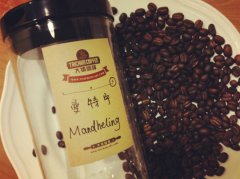Espresso Golden Rule
Hydraulic pressure
The modern coffee machine is much more advanced than the old LAVA machine, which is controlled by a water pump to output controllable water pressure. Espresso ideal water pressure is generally 9 BAR, which is generally recognized as the most ideal atmospheric pressure.
Boiler pressure
The boiler pressure is related to the water temperature of coffee making and the impulse of steam. The higher the boiler pressure, the higher the water temperature and the greater the impulse of the steam; otherwise, the lower the water temperature, the smaller the steam. The boiler pressure is generally around 1 BAR, but there is still a lot of controversy about this number, and every barista has a different understanding.
Water temperature
The water temperature depends on the needs of different varieties of coffee beans, some are subject to boiler pressure, while others are more flexible and precise. According to the experience of most baristas, the water temperature is between 90 and 92 degrees Celsius, and each barista can flexibly adjust according to his own understanding and needs, which is why the editor has always envied professional baristas and can make their own style Espresso with their own hands.
There are various styles of packing. In this world, almost no two people's packing will be the same. Generally speaking, if it is heavy pressure, the required pressure will be the pressure like 25kg/m2, but packing is indeed the freest parameter in the golden rule.
The grinding thickness will be related to many factors, such as climate, coffee bean baking degree, freshness, humidity, new and old bean grinder, and so on. There has always been a saying in the industry: "the right thing is that the grinding thickness is changing, and the wrong thing is that the grinding remains the same."
Powder quantity
The amount of Espresso powder in a single serving is 7-8 grams of coffee powder, and the double serving is 15-16 grams, which is a good math problem.
Extraction time
The extraction time of the Espresso gold rule is between 22 and 28 seconds, but the extraction time is actually a combination of packing pressure, powder content and grinding degree, which needs to be adjusted by the barista's understanding of Espresso.
Extraction quantity
Almost no one will change the amount of Espresso 30ml per serving and 60ml double, except for a few Italians who use a single serving of coffee powder to extract only 15ml of coffee liquid.
Coffee oil
The complexity of coffee grease can not be clearly explained by me in a few words. To put it simply, it requires a rich golden brown fat to make a good Espresso.
Important Notice :
前街咖啡 FrontStreet Coffee has moved to new addredd:
FrontStreet Coffee Address: 315,Donghua East Road,GuangZhou
Tel:020 38364473
- Prev

Indonesia Sumatra Mantenin Fine Coffee Bean Roasting
Mantenen, I call him the gentleman of coffee. mellow, fragrant and elegant were already synonymous with him. The gentleman in this coffee is produced in Sumatra, Indonesia, in Asia, so it can also be called Sumatra coffee. Coffee in Indonesia is now mostly Rochester, originating from a major disaster in 1877, when coffee rust destroyed almost all coffee trees and people.
- Next

The Origin and characteristics of Oulei Coffee
The French word for Ole Coffee is Caf é au lait, which means coffee with a lot of milk. In France, this fancy coffee with a lot of milk is a good companion for breakfast, using it with eulogy bread.
Related
- Beginners will see the "Coffee pull flower" guide!
- What is the difference between ice blog purified milk and ordinary milk coffee?
- Why is the Philippines the largest producer of crops in Liberia?
- For coffee extraction, should the fine powder be retained?
- How does extracted espresso fill pressed powder? How much strength does it take to press the powder?
- How to make jasmine cold extract coffee? Is the jasmine + latte good?
- Will this little toy really make the coffee taste better? How does Lily Drip affect coffee extraction?
- Will the action of slapping the filter cup also affect coffee extraction?
- What's the difference between powder-to-water ratio and powder-to-liquid ratio?
- What is the Ethiopian local species? What does it have to do with Heirloom native species?

